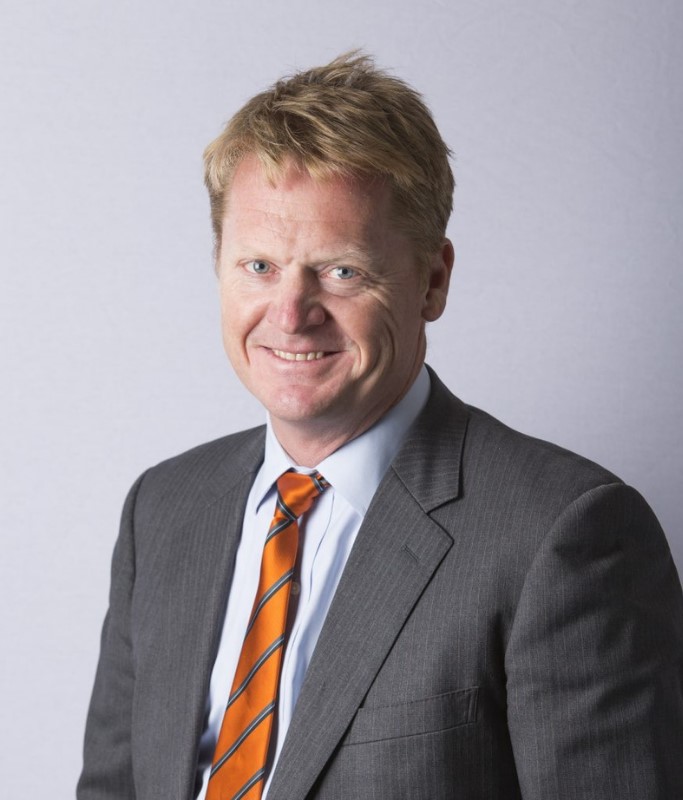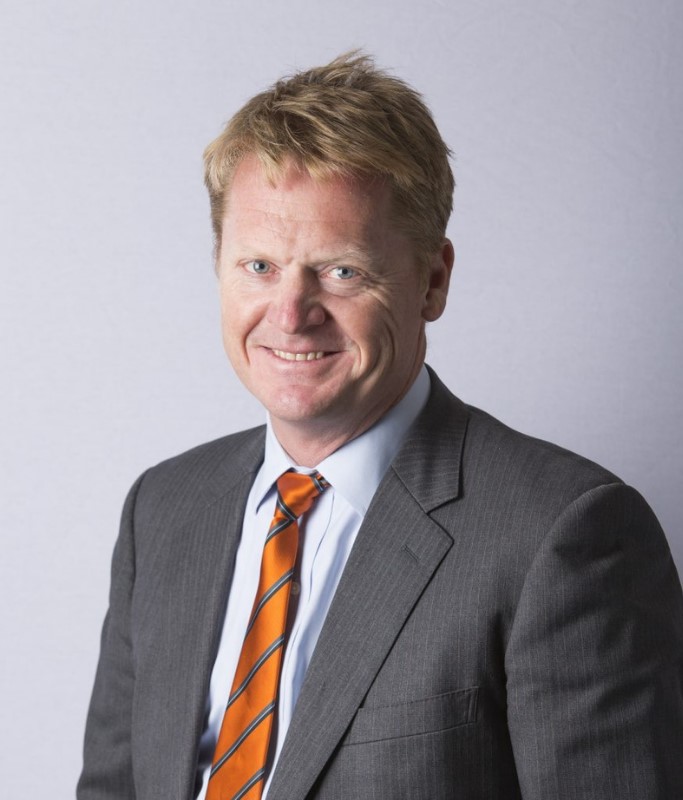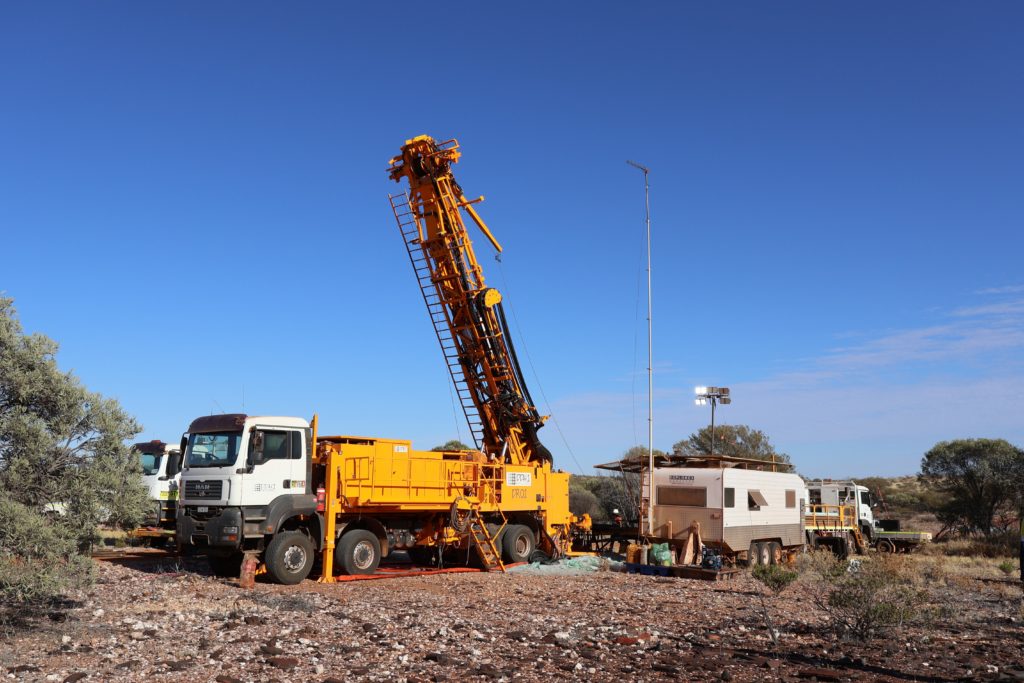Uncategorized
Red Dirt Metals’ David Flanagan talks giant pegmatites and why the ASX is ‘the best place in the world’ right now
Red Dirt Metals is eyeing an early entry into the lithium market as a DSO producer In 12 months it’s … Read More
The post Red Dirt Metals’ David…

- Red Dirt Metals is eyeing an early entry into the lithium market as a DSO producer
- In 12 months it’s defined a resource of 12.7Mt at 1.2% Li2O at its Mt Ida project, with the early stage Yinnetharra project also looking promising
- New executive chairman David Flanagan, founder of boom-time iron ore junior Atlas Iron, says the growth of the lithium market will support a supply response from nimble juniors
It stands to reason that geologist David Flanagan, who founded Atlas Iron in 2004 and flew the proverbial flag for the junior iron ore sector through the mining boom, would stake a claim in a sector that has many of the same attributes.
Also chairman of one time graphite explorer Battery Minerals (ASX:BAT), Flanagan is now the executive chairman of $180 million capped Red Dirt Metals (ASX:RDT).
The junior is eyeing an alternative route to market by starting its Mt Ida lithium project as a DSO operation within 12 months. It comes after Core Lithium (ASX:CXO), currently commissioning the concentrator at its new Finniss lithium mine in the Northern Territory, secured a price of US$951/t at auction for a shipment of 1.4% Li2O spodumene, less than a quarter of benchmark 6% concentrate grade.
Just 15,000t of the good stuff earned Core almost as much as Rio and BHP claw in for a capesize shipment of ~190,000t of iron ore. Incredible.
What is behind those numbers? An electric vehicle industry currently so short of lithium for its batteries that converters are willing to, for the moment at least, pay virtually anything.
That undersupply situation should create a niche for new junior players to join the giants like Pilbara Minerals (ASX:PLS), Mineral Resources (ASX:MIN), Allkem (ASX:AKE) and IGO (ASX:IGO) as spodumene producers.
Mt Ida produced 300,000oz in its former life as a gold mine and sits on a granted mining lease, smoothing RDT’s approvals pathway, with a scoping study due in the next quarter on the starter DSO mine from a maiden resource of 12.7Mt at 1.2% Li2O.
But Flanagan is potentially even more excited about Yinnetharra, 190km from Gascoyne Junction in WA’s thus far lithium-light Mid West region. RDT is spending $2 million a month drilling with four rigs across both sites, intercepting spodumene in the first six holes of a maiden program at Yinnetharra.
While one school of thought is that the world’s major pegmatites have largely been mapped because they were previously explored for tin and tantalum, Flanagan says the WA outback is anything but adequately explored for the battery metal.
“There is no way we’ve found all the pegmatites in WA, no way,” he said.
“I’m a geologist, and our geos in the field are walking up and finding great big slabs of unmapped pegmatites sticking out of the ground and we’re not the only ones who are doing it. It’s happening all across Western Australia.”
We caught up with Flanagan to talk about the re-emergence of the lithium DSO market, the role of junior miners in the sector and pegmatites so big they can only be appreciated from a helicopter.
It’s a market that only seems like it’s emerged very recently, that idea of starting up as a DSO operation out of Mount Ida. What are the significance of the changes in the lithium market that have enabled you to consider the DSO option?
“So Pilbara Minerals commissioned their project using DSO. Chris Ellison (MinRes) at Wodgina around the same time. I think pretty much all of the producers have done DSO for a year or two when they’ve cranked up.
“So probably the difference is back then the lithium DSO price was only US$250/t. Now people are achieving US$950. I think that’s a good change. In the context of all of that those guys who were producing DSO, they commissioned their concentrate plants, so now that’s what they predominantly sell.
“The scale of the lithium market is now massive compared to what it was then, it’s probably three-fold bigger. And Australia used to be a small player in the global lithium market, now we’re the biggest exporter of lithium units. The product’s become established. The market’s bigger, the price is higher.
“We still see there being risk in it because it’s seen as being a bit fickle, people turned it on and turned it off. But there were 35 bidders for that last Core (Lithium) batch of DSO. We’re not going to bet the future of the company on it but if there’s a chance to get up and running, and make really solid cash flow, then we will.”

In your past you were involved in the development of Atlas Iron. The one comparison that I’ve heard for the lithium sector is those early days of the iron ore boom. Is there any comparison in your mind between that and what we’re seeing in lithium currently?
“Yeah, there is. If you think the lithium salars around the world in South America, they were the incumbent, and there was sort of some competitive tension between those guys and the new spodumene guys, the challenging brand out of Western Australia.
“There was some tension between those two stakeholders. Now that spodumene out of Western Australia, it’s the world’s number one supplier of LCE units … and there’s probably an element there of (like when) FMG came in and challenged the incumbents in the iron ore space, there’s a bit of that, guys like Ken Brinsden have led that charge.
“I’d say that there’s an opportunity to challenge the notion of how you can get these things up and running quickly, and there’s going to be discoveries, and there’s going to be innovation around how they’re developed.
“So for example when we started our first iron ore mine (at Atlas) it cost the business $15 million and between getting environmental approval and sending our first ship out it took us eight weeks. Now, if you had told BHP or Rio or anyone like that they could get approval to start a mine and then ship eight weeks later, they would have said that could never ever happen.
“Another (similarity) is that there’s a lot of new entrants to the space and it presents opportunities for people to invest.
“We’ve got a really good exchange, there’s lots of different companies to choose from, all sorts of different stages of risk and reward. And I think that cements the Australian Stock Exchange as the best place in the world to be for a lithium company.”
Just touching on that, you mentioned the speed to market that you had as a junior back in the day with Atlas Iron. Do you think that with the lithium market growing now the way it is opens the opportunity for those nimble junior players to come in and do things a bit differently?
“Absolutely it will.
“There’s an opportunity for a supply response. But I think a supply response at scale still needs you to build a concentrator and they’re quite big, they’re quite expensive, and you need to do a lot of work and to take your time commissioning them.
“And that’s going to be the main constraint on why the market remains in deficit for some time. The price of concrete has gone up, the price of steel has gone up, there’s a shortage of labour, all of these things will slow down (the process).
“That’s why we’ve rushed at the DSO out of Mt Ida and why we think the DSO is a good place to be.”

At the Mt Ida project it’s obviously very exciting to have a maiden resource there but you’ve also picked up the Yinnetharra project and in your mind, you said the pegmatites, they’re much larger, there’s much more outcrop from what you’ve seen so far. Why do you think that Yinnetharra might be more impressive than Mount Ida down the line?
“So at Mount Ida, I think we’ve only got two small pieces of outcrop and if you look at the contained metal value that those two small pieces of outcrop — no bigger than a dining table — it’s somewhere between 6 and 8 million ounces of gold equivalent right?
“If you sort of thought of dinner tables and what your productivity is per dinner table, at Yinnetharra we’ve met now 54 pegmatites.
“Some of them are 700 metres long and 60 metres wide. You’ve got to get up in a helicopter (to see them).
“It’s huge (and) it’s only ever had 34 drill holes, and the previous explorers have hit lithium intercepts up to 30 metres wide, at depths of 80 metres.
“Now I don’t for a second want you to think that I think all 54 pegmatites are going to be mines. I don’t. But we have done six drill holes there in our last 10 days and we’re really impressed with what we’ve hit in the drilling.
“So basically, the scale of the pegmatites, the scale of the surface mineralisation, the fact that there’s now been 40 holes drilled there, we can see the geometry and we’ve communicated it to the market.
“We’re not allowed to say that it is certain (Yinnetharra will be larger than Mt Ida) because of all sorts of legal qualifiers and stuff, but if you have a look at the size of the outcrop, it’s hard to imagine there not being a large resource there.”
Red Dirt Metals (ASX:RDT) share price today:
The post Red Dirt Metals’ David Flanagan talks giant pegmatites and why the ASX is ‘the best place in the world’ right now appeared first on Stockhead.












